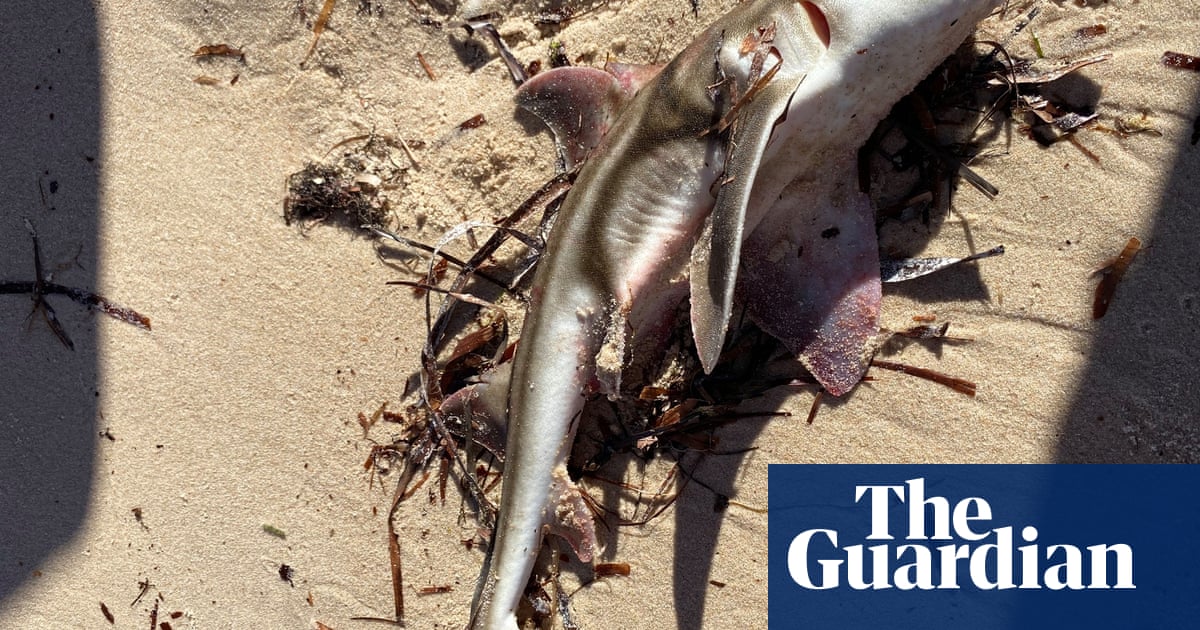More than 200 marine species, including deepwater sharks, leafy sea dragons and octopuses, have been killed by a toxic algal bloom that has been affecting South Australia’s coastline since March.
Nearly half (47%) of the dead species were ray-finned fish and a quarter (26%) were sharks and rays, according to OzFish analysis of 1,400 citizen scientist reports.
Cephalopods – like squid, cuttlefish and octopuses – accounted for 7%, while decapods – like crabs, lobsters and prawns – made up 6% of species reported dead or washed up on beaches.
The OzFish South Australian project manager, Brad Martin, said the harmful bloom – ofKarenia mikimotoialgae – was like a toxic blanket that smothered marine life.
Get Guardian Australia environment editor Adam Morton’s Clear Air column as an email
“It can suffocate fish from their gills, cause haemorrhaging by attacking their red blood cells, and act as a neurotoxin and attack the fish’s nervous system and brain, causing unusual behaviour,” he said.
“This is why some fish and sharks are acting so strangely and why many of the dead have a red tinge – it is like a horror movie for fish.”
According to the state’s environment department, the algal bloom was being driven by an ongoing marine heatwave – with water temperatures 2.5C hotter than usual – as well as relatively calm marine conditions with little wind and small swells.
While not toxic to humans, the algae could cause skin irritations and respiratory symptoms, and causedmass mortalitiesin marine life.
The algae was first identified in mid March on the state’s Fleurieu Peninsula and had since expanded to coastlines across the south-east, the Gulf St Vincent, the Yorke Peninsula and Kangaroo Island, Martin said.
OzFish, an organisation dedicated to restoring waterways and fish habitats, was concerned about the long-term impact on fisheries, given the bloom had killed fish at all ages – from fingerlings, or baby fish, up to full-grown breeding fish – as well as their food sources.
Several oyster farmsand the commercialharvesting of pipishave been temporarily closed due to the outbreak, which has been unprecedented for South Australia, its environment minister, Susan Close, said.
“We’re talking about a very large algal bloom with a significant impact on marine life,” she said, with some parts of the outbreak going 20 metres deep.
Marine biologist Prof Shauna Murray from the University of Technology Sydney – whoidentified the algaeunder the microscope and by analysing its DNA – said there were about 100 species of harmful algae, each with a different toxic effect.
Sign up toClear Air Australia
Adam Morton brings you incisive analysis about the politics and impact of the climate crisis
after newsletter promotion
While still not well understood,Karenia mikimotoiwas thought to produce a reactive oxygen that caused gill cell damage in fish – which meant they could not breathe, Murray said.
While the current bloom stretched over 150km, it was not the worst in Australia’s history. In 2013, a bloom of a different species,Alexandrium catenella, had “basically covered the entire east coast of Tasmania and shut down their aquaculture and seafood industries for about four months”, she said.
Large blooms could also reduce the amount of oxygen in the water, said Prof Martina Doblin, a UTS oceanographer who specialises in algal blooms.
Karenia mikimotoiis an unusual algae that was capable of feeding on sunlight as well as other organisms, she said. And it is these characteristics, combined with unusually high and stable water temperatures, that enabled the algal bloom to become so large and sustained.
“In low abundance, it is part of the natural food web. But in high abundance, it can become very problematic,” Doblin said.
While such events were rare, they can be devastating for local economies, she said. Improved early warning systems and management had the potential to limit the damage.
Strong westerly winds were ultimately needed to dissipate the algae, according to a spokesperson for SA’s environment department. “However, persistent high-pressure systems affecting southern Australia have delayed these winds,” they said.
